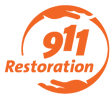Spring Home Restoration & Maintenance | checklist
 With the summer season just around the corner, it is natural to look for home restoration and maintenance tips to keep your property safe and secure through the changing season. You have invested time, energy, and money into your property, and to protect it, you need to consider a handful of things.
With the summer season just around the corner, it is natural to look for home restoration and maintenance tips to keep your property safe and secure through the changing season. You have invested time, energy, and money into your property, and to protect it, you need to consider a handful of things.
Some of the most common culprits that you will need to worry about include:
- The need for water damage restoration as the humidity increases
- The increased risk of fire and smoke damage as the electrical system heats up
- Mold removal because of the warm environment your home will provide
Wind, hail, fire, and water damage include some of the most common types of insurance claims for commercial restoration crews and residential services. This article will introduce a spring home restoration and maintenance checklist that you will need to follow to prevent damage to your property and ensure that you don’t get overwhelmed caring for it.
Spring Home Restoration & Maintenance Checklist
This checklist is dedicated to larger homes and similar residential properties, but condominiums, apartments, and smaller houses can also benefit. The home restoration and maintenance checklist has been devised by taking NFPA guidelines for fire damage restoration and IICRC recommendations.
It includes 36 key points to help you reduce the risk of disaster to your property. We have organized it according to the type of damage. Feel free to print it out and stick it to your fridge or your notepad while you go through each of them, or share the same with your neighbors and peers so that they can stay safe.
Start With Water Leaks
- Inspect your fixtures and pipes thoroughly
- Clear gutters, especially the ones on your roof
- Cover debris around fixtures and make sure nothing is splashing the water in your garden.
- Ensure that you have a water damage restoration company ready and waiting
Mold Removal
- Maintain a humidity level below 60%. Get a dehumidifier if needed.
- Deep-clean your sinks – both in the bathroom and kitchen
- Ventilate your property thoroughly
- Inspect the drywall for any signs of water damage
- Inspect the attic thoroughly for any standing water
- If there is water under the flashing, dry it up immediately
Wind, Hail. & Storm Damage
- Install storm shutters
- Ensure roof integrity by checking the flashing, shingles, and drains
- Inspect HVAC ducts
- Trim trees within 8-15 feet of your home
- Remove exterior debris, particularly near windows and HVAC systems
- Secure outdoor items
Fire Damage Restoration & Prevention
- Test smoke alarms
- Smoke outdoors only
- Inspect HVAC system, filter, and ducts for dust and water
- Service your HVAC system if you haven’t already in the last 11 months.
- Inspect your electrical system. Listen and look for any sparks or heated wires.
Cleanup & Sanitization Services
- Enforce sanitization at the house entrance
- Clean and sanitize dining and living room
- Keep the kitchen clean
- Schedule disinfection if you have had a party or gathering
Sewage Backup
- Ensure the sewage pipes are clean and water is flowing smoothly
- Listen for odd noises from the flush or bubbling from the sink
- Schedule a septic tank checkup
- Inspect plumbing and pipes and correct any misalignments or bursts
- Ensure there is no leakage or smell in the bathrooms
Miscellaneous
- Change HVAC air filters
- Cover the heater(s) adequately and store them away from flammable fuels and objects
- Inspect your property for any hazards that may heat up and cause issues
- Check local forecasts for wildfires and storms
- Check insurance coverage
- Maintain landscape or gardens neglected during winter. The spring growth rate is usually high, and bushes can creep up very easily
- Inspect dark, humid places for mold
- Establish a watering schedule for plants and the garden.
- Ensure there is no standing water, or you aren’t overwatering the garden.
- Ensure that the trash and recycling cans remain clear
- Check wood floors for rot
- Check for rust or peeling paint
- Check for bubbling paint or squishy drywall
You must check AT LEAST the things mentioned above. You can also go the extra mile by looking for other precedence issues at your place. For example, insects may be nesting under the stairs or in the crawl space in some houses. Mosquito and spider nests are actually very common in Calgary, so be mindful of that.
Keeping your home or residential building well maintained is key to ensuring your own and your family’s safety. IICRC recommends that you get your property professionally evaluated every Spring season to check for any damage during the winter and prepare for the coming storms during the monsoon.
If you would like to schedule a reliable and trustworthy inspection, give 911 Restoration of Calgary a call. We can help you stay up to code by inspecting every nook and cranny and making short work of it through our experience and equipment. We’re here to help and offer FREE visual inspection for property owners!

